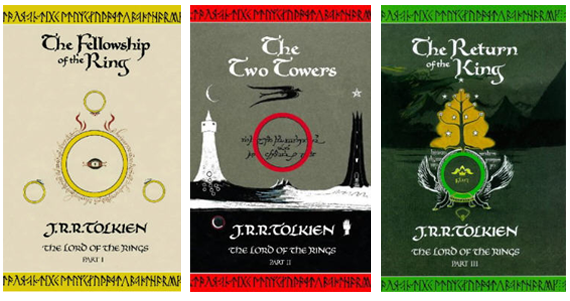
The Lord of the Rings is a book trilogy written by J.R.R. Tolkien and published between the years of July 1954 and October 1955. The story has achieved immense popularity since, resulting in innumerable fan clubs, references, and an award-winning movie adaptation.
The book follows the events of a fictional fantasy war from the perspective of a number of characters, the primary protagonists being of a fictional race known as Hobbits, or Halflings. Other main characters belong to non-human races as well, from dwarves to elves and more. The trilogy is notoriously long and densely populated with varied themes and concepts of social and moral nature, making it an excellent choice for those wishing to analyze a text through a socially conscious lens.
The racial variety of the story is one such point that provides for good conversation. Tolkien wrote the book during the course of World War II, at a time when racial tensions were at a high. Tolkien himself was vocally anti-racist, and this is reflected in the multiracial and multilingual nature of his crowning work; he even goes so far as to portray racial tensions between the elves and dwarves of his story, while later showing how it is possible to overcome these racist preconceptions.
The concept of “Othering” also holds a massive part within the story. The aforementioned Hobbits are described as being very short – between two and four feet tall – and somewhat reclusive, and for these reasons among others are often overlooked or underestimated by the more-traditionally powerful characters of the story. The Hobbits as such strongly play the part of the Other, yet it is the doings of three Hobbits that ultimately prove the final undoing of the main antagonist. This transition, from forgotten Other to hero, is a fascinating development that remains a central theme to the story.
At the same time however, there remain many critics who interpret the antagonists of the story as being representative of racist themes present during World War II. While there is some out-of-context evidence to support these claims, they have been repeatedly dismissed by Tolkien himself, his surviving estate, and evidence throughout the rest of the text that strongly indicates the contrary.
Tolkien’s work remains one of the greatest pieces of literature ever written, and is replete with many other examples of social and moral concepts. Despite the time and circumstances under which it was written, Tolkien’s story was revolutionary piece of literature with values and messages that have only grown in importance in the years since. A must read for anyone interested in the concepts of social injustice and power.